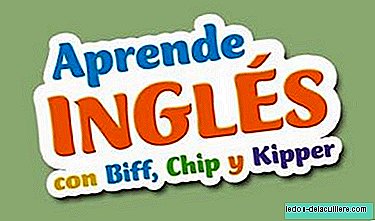
The next day September 12, 2014 arrives at Nintendo 3DS and 2DS the prestigious Oxford University Press program who has taught English from an early age to millions of children around the world, through the magic and adventures of some of the most beloved illustration characters in the United Kingdom. Learn English with Biff, Chip Y Kipper It will be available in three different volumes, each in a cartridge, and will be useful for children and parents because it includes fun English language initiation exercises.
The software uses the stories of the popular textbooks Floppy's Phonics designed by Oxford Reading Tree and with which some Spanish parents may already be familiar. It is a method of synthetic phonetics that is implemented in schools in 138 countries around the world. Now, and thanks to the special features of Nintendo 3DS and Nintendo 2DS consoles, the series is presented in an intuitive format in three volumes full of games designed by education experts to offer both motivation and reward to children.
Learn English with Biff, Chip and Kipper take scenes and illustrations from the book series and use the same method of synthetic phonetics as books, introducing children to the individual sounds of each letter before combining them to read a word. Children can have fun practicing English on their consoles using the touch screen to move easily through the exercises, receiving voice instructions from the console and using the “playback” option to record your voice with the console microphone and then check how they said what they were asked for.
The software also encourages parents to help their children learn English, joining them by singing songs or reading stories aloud, among other options. Further, Parents who wish to check their children's progress and see information about their results after each set of exercises. Each game includes a useful Parent Guide, with which you can learn more about the exercises and the teaching method that the software follows.
The three volumes are:
- Volume 1- At Level 1, children focus on the sounds they hear around them in their daily lives - at school, at home, in the park or in their city. Levels 1+ and 2 take them one more step, so that they practice those sounds (phonemes) and begin to introduce alternative spellings of some sounds (consonants).
- Volume 2- At Level 3, children continue to practice new sounds and alternative spellings of specific vowel sounds are introduced. Level 4 reviews all the sounds already introduced, before moving on to more alternative spellings, as well as to different pronunciations of the “-ed” suffix.
- Volume 3- When they reach Level 5 and 5M, the children gather all the knowledge of the different spelling and pronunciation possibilities they have learned so far. The exercises help children strengthen the connection between sounds and the different ways in which they are written. At Level 6, the emphasis is placed on increasing the child's confidence and fluency through the reading of a variety of nonfiction books.
I think it is a good initiative to use the resources of Nintendo machines to encourage and encourage among kids The desire to learn. I think it is important to know that these machines have features that go beyond gaming and entertainment and that also, using the right software, they can become machines to teach and drive learning.












